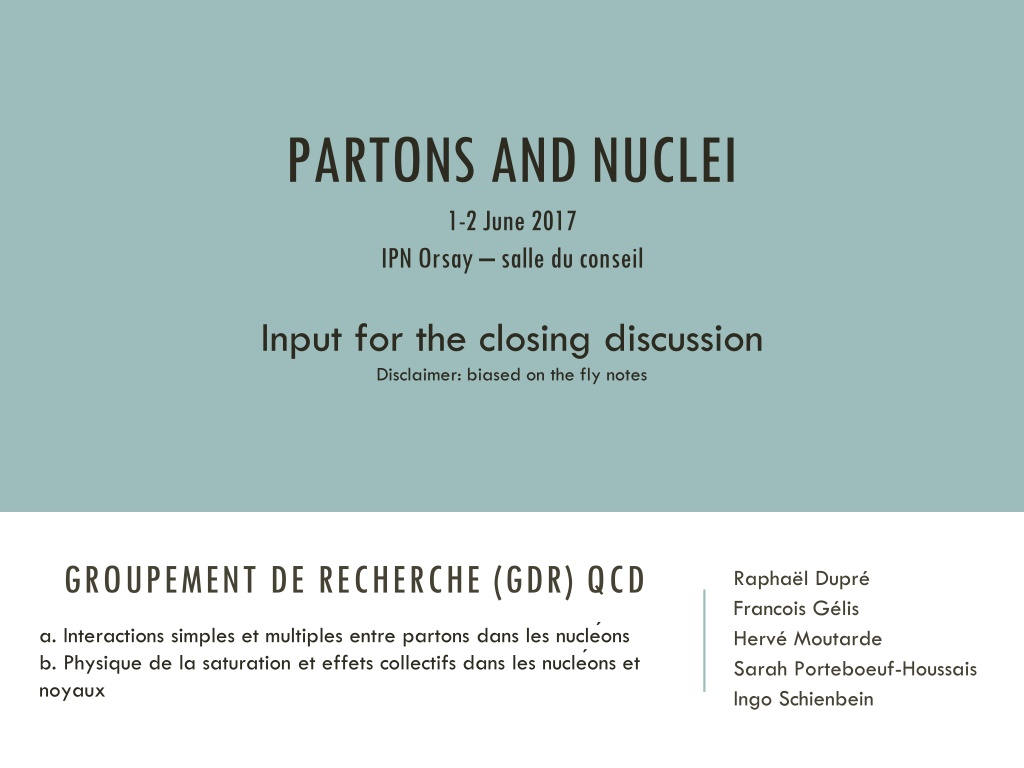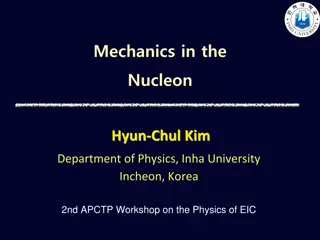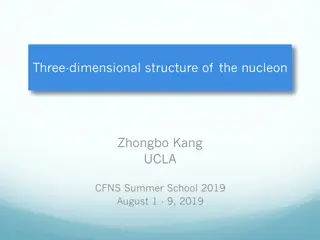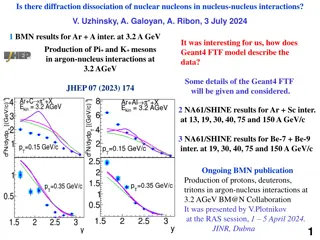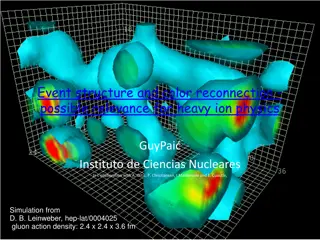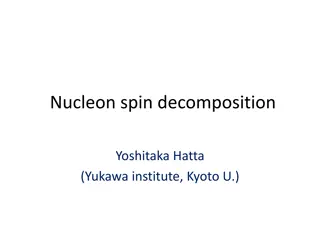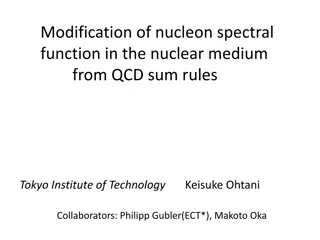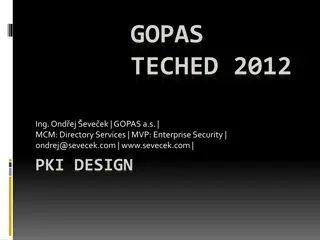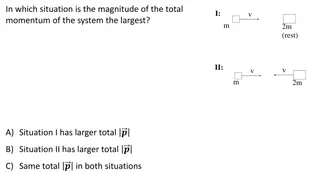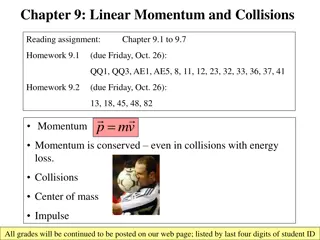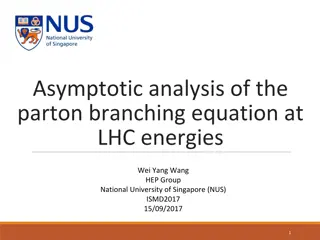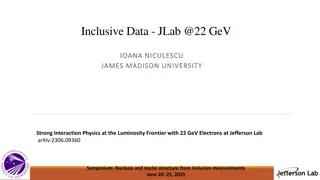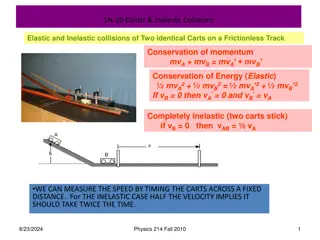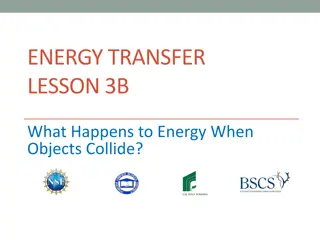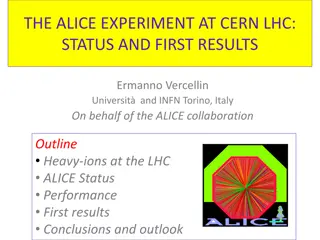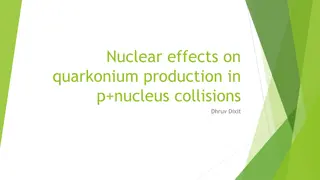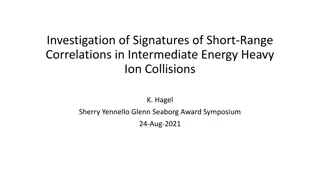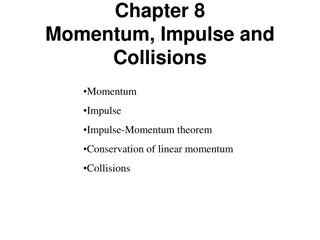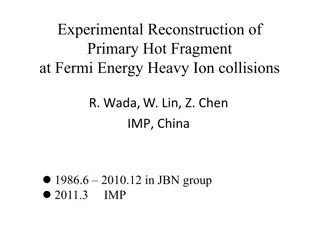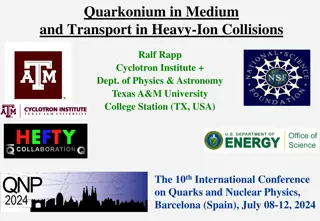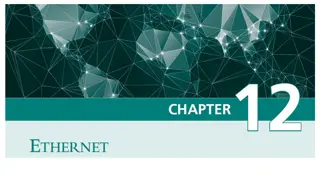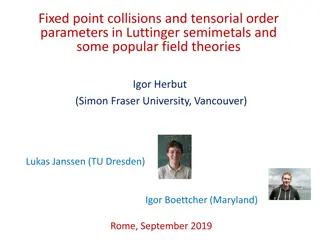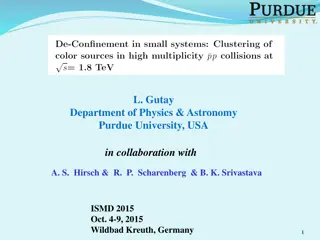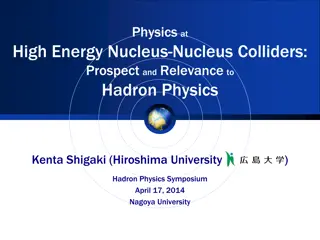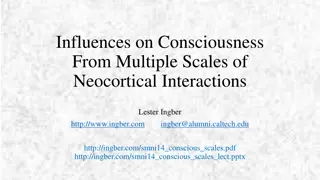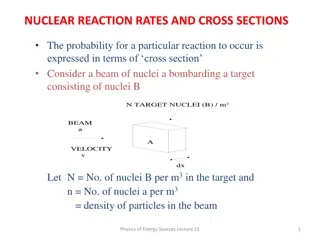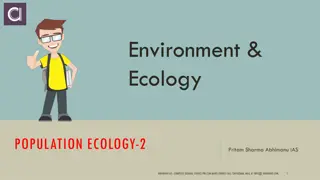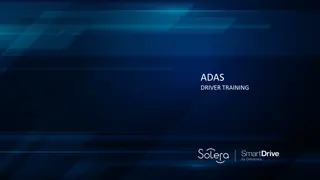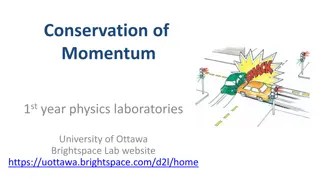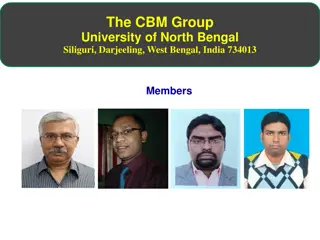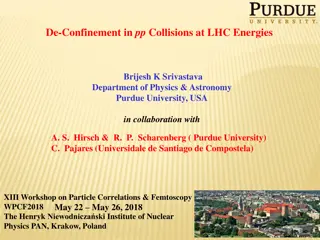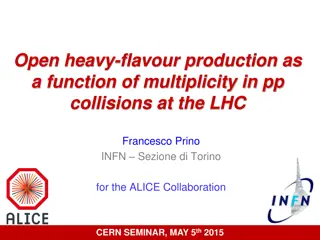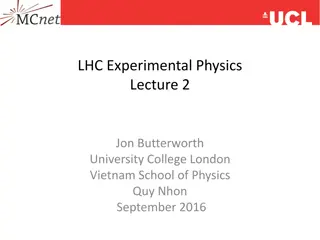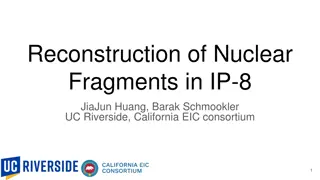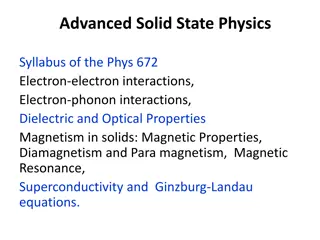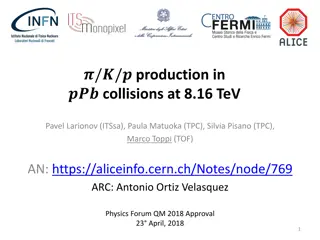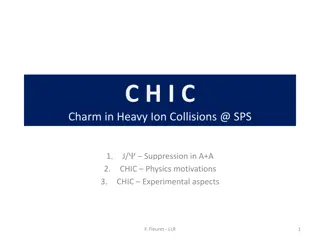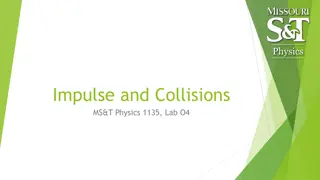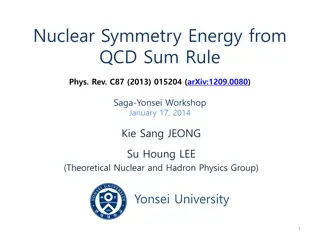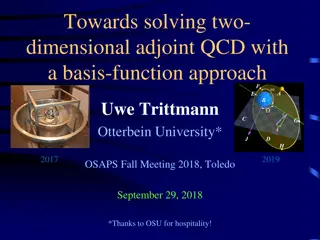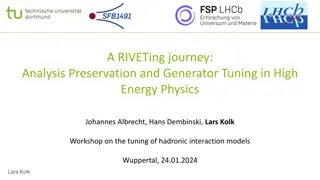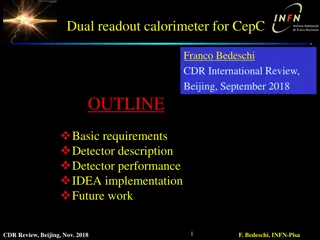Exploring Parton and Nucleon Interactions in Hadronic Collisions
Discussions at the GDR QCD workshop covered a range of topics from double parton scattering to coherent processes on nuclei, emphasizing the importance of understanding parton interactions in both proton-proton and heavy ion collisions. Theoretical frameworks such as DPS, SPS, GPDs, and TMDs were explored in the context of LHC experiments, with a focus on measuring di-jet production, heavy quark polarization, and factorization in nuclear collisions.
Download Presentation

Please find below an Image/Link to download the presentation.
The content on the website is provided AS IS for your information and personal use only. It may not be sold, licensed, or shared on other websites without obtaining consent from the author. Download presentation by click this link. If you encounter any issues during the download, it is possible that the publisher has removed the file from their server.
E N D
Presentation Transcript
PARTONS AND NUCLEI 1-2 June 2017 IPN Orsay salledu conseil Input for the closing discussion Disclaimer: biased on the fly notes GROUPEMENT DE RECHERCHE (GDR) QCD Rapha l Dupr Francois G lis Herv Moutarde Sarah Porteboeuf-Houssais Ingo Schienbein a. Interactions simples et multiples entre partons dans les nucle ons b. Physique de la saturation et effets collectifs dans les nucle ons et noyaux
FROM NUCLEON STRUCTURE TO HADRONIC COLLISIONS Double Parton Scattering: many estimations of eff: process and energy independant or not? towards a clearer physical interpretation (DPS/SPS and GPDs) What about MPI ? TMD formalism getting generalized to LHC with saturation. Will the very different kinematics allow for a check of universality ? Measurement of coherent processes on nuclei open a new avenue to study nuclei. Nuclei allow to play with spin in these processes.
FROM PP TO AA What are the elementary interactions to describe collisions ? Physics continuum from pp to AA Hydrodynamics in pp collisions? Pomerons in EPOS, MPI RAA interpretation with interplay between soft and hard processes Importance of saturation Progress on JIMWLK calculations for LHC and in the small-x field in general. Many indications but still looking for the silver bullet for CGC? Gluon TMDs in the small-x limit, their (non-linear) QCD evolution can be obtained from JIMWLK equation Explain closed and open charm vs. Multiplicty in EPOS (and not hydro) nPDF Should they respect sum rules? Now includes LHC. Progress in error handling. A roadmap for the addition of heavy quarks in the future. NNLO and amount of data key.
NEW MEASUREMENTS Many experimental tests proposed: Exploring reggeon explanation of the anti-shadowing. Exploring exotic Fock states of the light nuclei and intrinsic (high x) strangeness and charm. Tagged measurements at Jlab and EIC Forward J/Psi + jet at LHC => test of BFKL evolution + NRQCD quarkonium production Think about measurement in Heavy Ion collisions in term of multiplicity despite Ncoll/Npart DPS measurement At LHC : DPS as function of multiplicity EIC
GROUP A MEETING, 29-30 SEPTEMBER 2016 : SIMPLE AND MULTIPLE INTERACTIONS BETWEEN PARTONS IN NUCLEONS https://indico.in2p3.fr/event/13459/ Focus on pp and heavy ion collisions initial stages (some inputs): How a better comprehension of proton structure can lead to a better description of proton-proton collision at high energy ? Change use of PDF in the direction of TMD s or GPD s, CGC and gluon TMD s : measurement of di-jet at small x Heavy quarks production (ccbar, bbar) polarization measurement: the link with TMD ? Factorization in pA and AA? Which observables can probe factorization breaking ? Alternative to nPDF s ? Link between initial stage in pp and heavy ions, with CGC ? with MPI ? Extension of DPS framework to pA and AA, nuclear GPD s? TOOLS : event generators and data fits
Partonsand Nuclei https://indico.in2p3.fr/event/14438/overview The workshop aims at exploring the physics continuum from proton to nucleus with a focus on three topics : Hadronic collisions initial conditions (from pp to AA) Color glass condensate and saturation Multiple correlations within partons and within nucleons Factorization in AA Event generators pp and AA ep and eA Partonic structure of nucleus Nucleus DVCS Nuclear PDF's and their uncertainties
PRACTICAL INFORMATION Agenda https://indico.in2p3.fr/event/14438/timetable/#20170601 WIFI Lunch
BACKUP Conclusion slides from first meeting
Proton-proton collision : initial stage How a better comprehension of proton structure can lead to a better description of proton-proton collision at high energy ? Change use of PDF in the direction of TMD s or GPD s, Na ve guess: observable dependent, can we make a list? how can we use automatic codes in the context of LHC ? What do we learn on nucleon structure ? What do we learn on non perturbative regime of QCD ? C dric Lorc CGC and gluon TMD s : measurement of di-jet at small x C. Marquet Heavy quarks production (ccbar, bbar) polarization measurement :the link with TMD ? MPI in pp collision at high energy 2 explicit hard interactions Thomas Kasemets, Y. Li Z. Conesa Del Valle, S. Porteboeuf-Houssais More interactions
Heavy ion initial stage The nucleon is not free in the nucleus I. Schienbein Nuclear effects => (anti)-shadowing, EMC (still not understood) Interactions between nucleons in the nucleus nPDF s and realistic uncertainties Factorization in pA and AA? Which observables can probe factorization breaking ? Alternative to nPDF s ? Link with initial stage in pp with CGC done in some region of the phase space with MPI ? Extension of DPS framework to pA and AA nuclear GPD s? C. Hadjdakis
TOOLS Event generators level Data Fits to extract properties : nucleon tomography, PDF, nPDF, GPD (PARTON) Impact of lattice QCD development?
